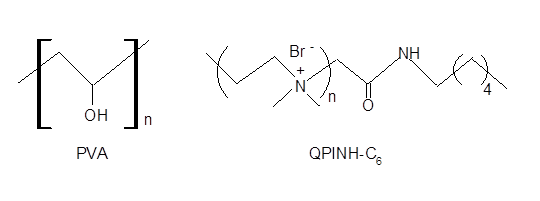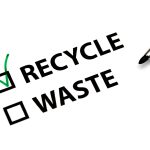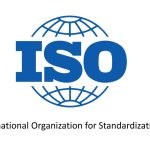Recently1, it has been claimed that a transparent plastic polymeric sheet prepared by mixing Polyvinyl alcohol (PVA) and a water-soluble polyethylenimine derivative (QPINH-C6) is able to reduce bacterial and fungal counting in 99.9-99.99 % in 15 min. It is also reported 3 log reduction against influenza viral load in 30 min. The activity of the QPINH-C6 gel (mixed with gellan gum (polysaccharide) and PVA) had been reported prviously2; however, it’s mixing with PVA in DMSO: water (1:8) on a plastic mold produces, after drying at 60 oC for 12 h, a transparent and mechanically strong sheet that could be used to cover hospital and commercial settings.
Bacteria, fungi, and viruses can grow onto different surfaces forming colonies that contribute to nearly 50% of infection-spread in human beings. These pathogens biofilm formation on the surface makes their elimination process difficult and slow. Once the pathogen biofilm is developed on the surface, contamination by direct contact is spread through healthy individuals. This spread could become persistent in places like hospitals, offices and houses. Protective barriers as plastic sheets with antibacterial properties are constantly being developed. However, since the antibacterial component is consumed or passivated once in contact with the pathogen, the search for a more permanent activated anti pathogen and transparent surface protectors continues. For instance, via photo activation using coated plastic film3

1.- B. Bhattacharjee, S. Mukherjee, R. Mukherjee, J. Haldar, ACS Appl. Bio Mater.,(2022) https://doi.org/10.1021/acsabm.2c00476
2.- B. Bhattacharjee, L. Jolly, R. Mukherjee and J. Haldar, Biomater. Sci., (2022),10, 2014-2028
3.- C.Autthanit, S. Jadsadajerm, O. Núñez, P. Kusonsakul, J.A. Luckanagul, V. Buranasudja, B. Jongsomjit, S. Praserthdam, P. Praserthdam, Bulletin of Chemical Reaction Engineering and Catalysis (2022) 17(3):508-519 DOI: 10.9767/bcrec.17.3.14180.508-519





